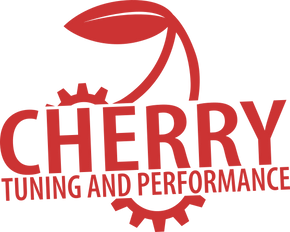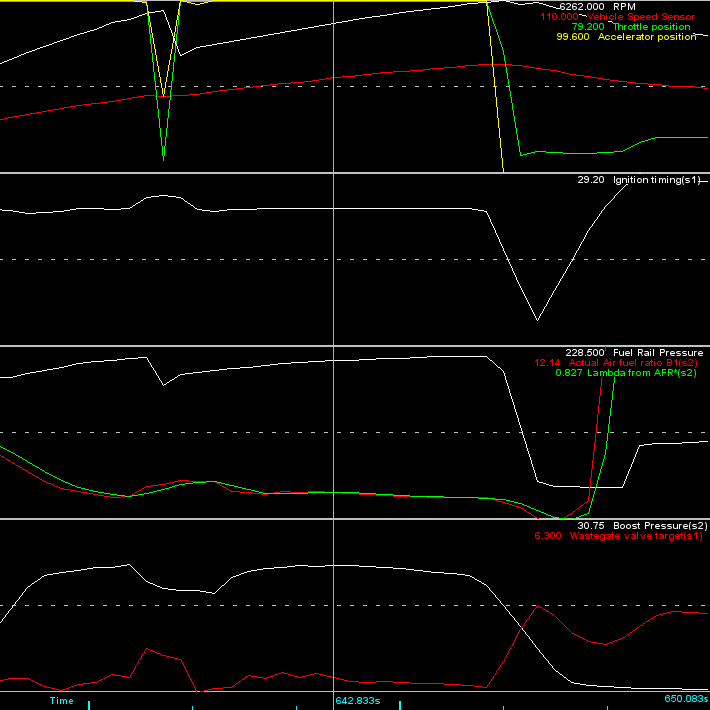
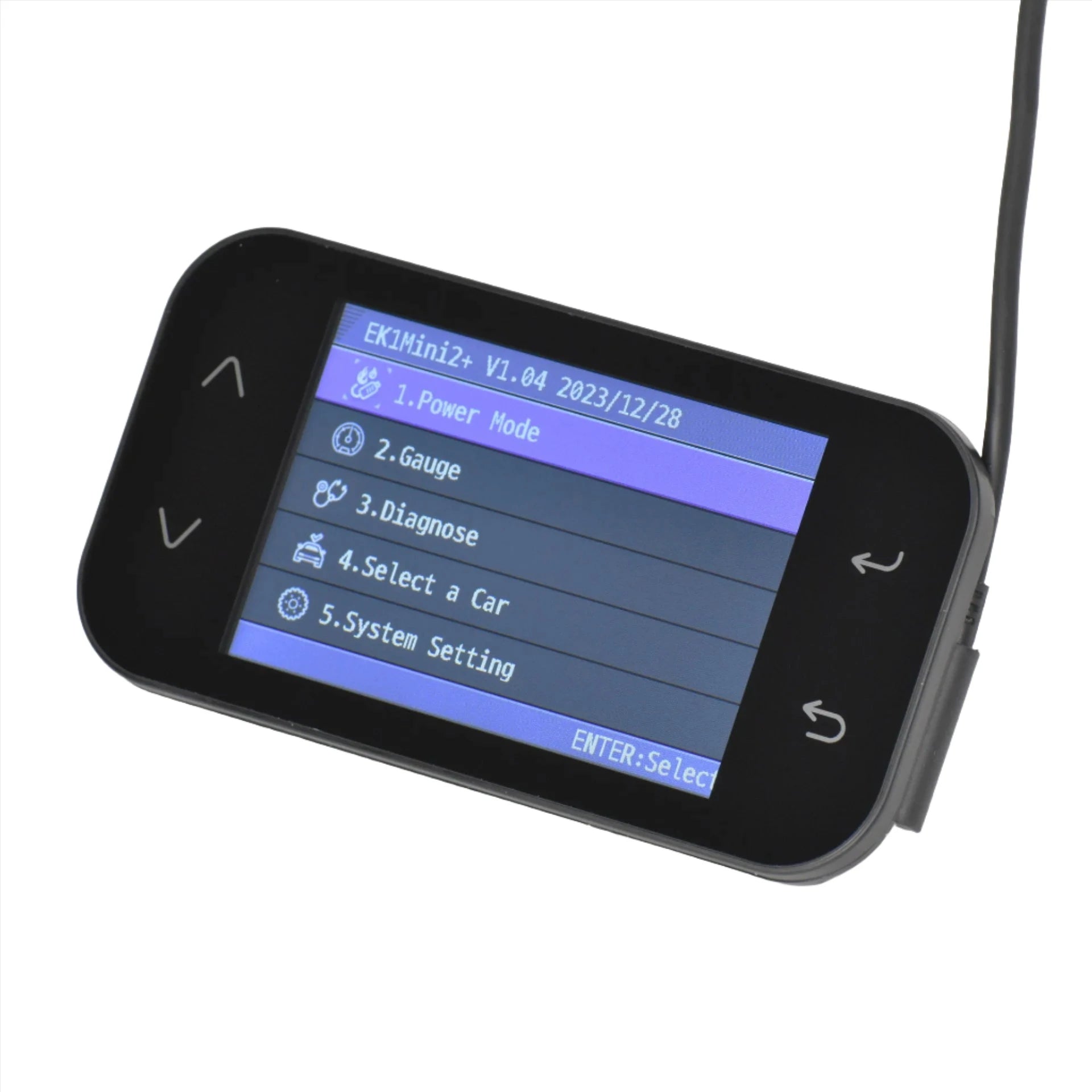
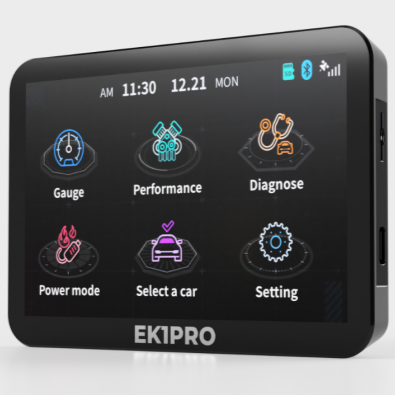
Cherry Tuning & Performance
EK1 Custom ECU Tuning
Select Tune Option
Do you want any tune options?
Do you want modified/added pops?
Your car should be exactly how you want
Your car, Your choice!
We put the power in your hands, allowing you to completely customise your tuning experience. It might be something as simple as a basic idle increased, or maybe you're looking for a more aggressive pop tune? Or perhaps you're looking to get the "Cherry Chop" from our Ghost Cam Tune? You have the power to select whatever options you want and have your car the exact way you want it, ensuring you stand out from the crowd!
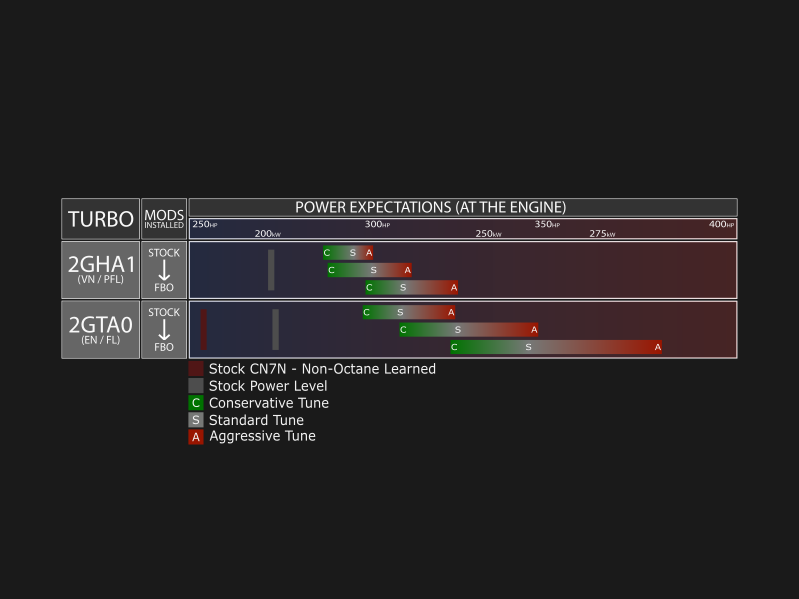
How hard do you want to push it?
Lets Talk Aggression
At the basis of every custom tune is a key understanding of what you're looking for from your car in an overall sense. Different owners value different things from their cars, and not everyone wants to risk their car to try and set Dragy records.
The main benefit of custom tuning is that your tune will always be done specifically for the modifications on your car. For example, an aggressive tune on a completely stock car is likely to be targeting less boost/timing/power/torque than even a sedate tune on a car with full-bolt-on mods.
Tuning Breakdown
When it comes to tuning, we run things a little differently to what you might be used to. Generally tuners will offer you a "Stage 1" tune with a list of recommended modifications and most cars will be tuned more or less the same regardless of any modifications you may or may not have installed. With a custom tune from Cherry Tuning, your level of modifications is always taken into consideration when we make your tune file. This means that the tuning level that you select is not reliant on how modified your car is, instead it's an indicator of the general approach we will take with your tune - based on your specific car and modifications.
To that end, below is a brief description and guide to assist you with selecting the right level of tune for you and your car. Under each heading you'll also see an estimated revision count, and an engagement timeline.
Estimated Revisions
The revision counter shown is not a fixed number, and we don't charge you if you want/need more revisions for your tune to ensure you're happy with it. Instead this serves as a guide as to how many times we would generally expect to need to make revisions to ensure the car is happy with the tune, and that you're happy with how it drives.
Engagement Timeline
This serves as a general indicator of how long we expect the tuning process to take from the time you receive your first revision up until we would normally expect the tune to be finished. This is part of the reason why higher levels of tune are more expensive, we give you advice, updates, and support throughout the tuning process, and if your tune is a particularly complex one, we could be working on it for a while.
Note: These are rough estimates, and are not an indicator of how quickly you should expect a tune from us. We are a small company, and unfortunately EK1 tuning is not the only work that we do. We try our best to balance tune development, product development, community engagement, local dyno tuning, mechanical work, product/warehouse management, packing and shipping orders, testing at the race track, and much more. Please be patient with us - we try to dedicate as much time to our tune customers as possible, and you will get your tune from us eventually.

Reliability > Power
Conservative tune
This is for customers who value the reliability and longevity of their car more than they care how much power can be made. This option will still provide performance and drivability improvements; however, we will focus on making power in a safe and conservative manner, rather than focusing on how much power the car can make.
Estimated Revisions: 0-2
Engagement Timeline: 2 weeks
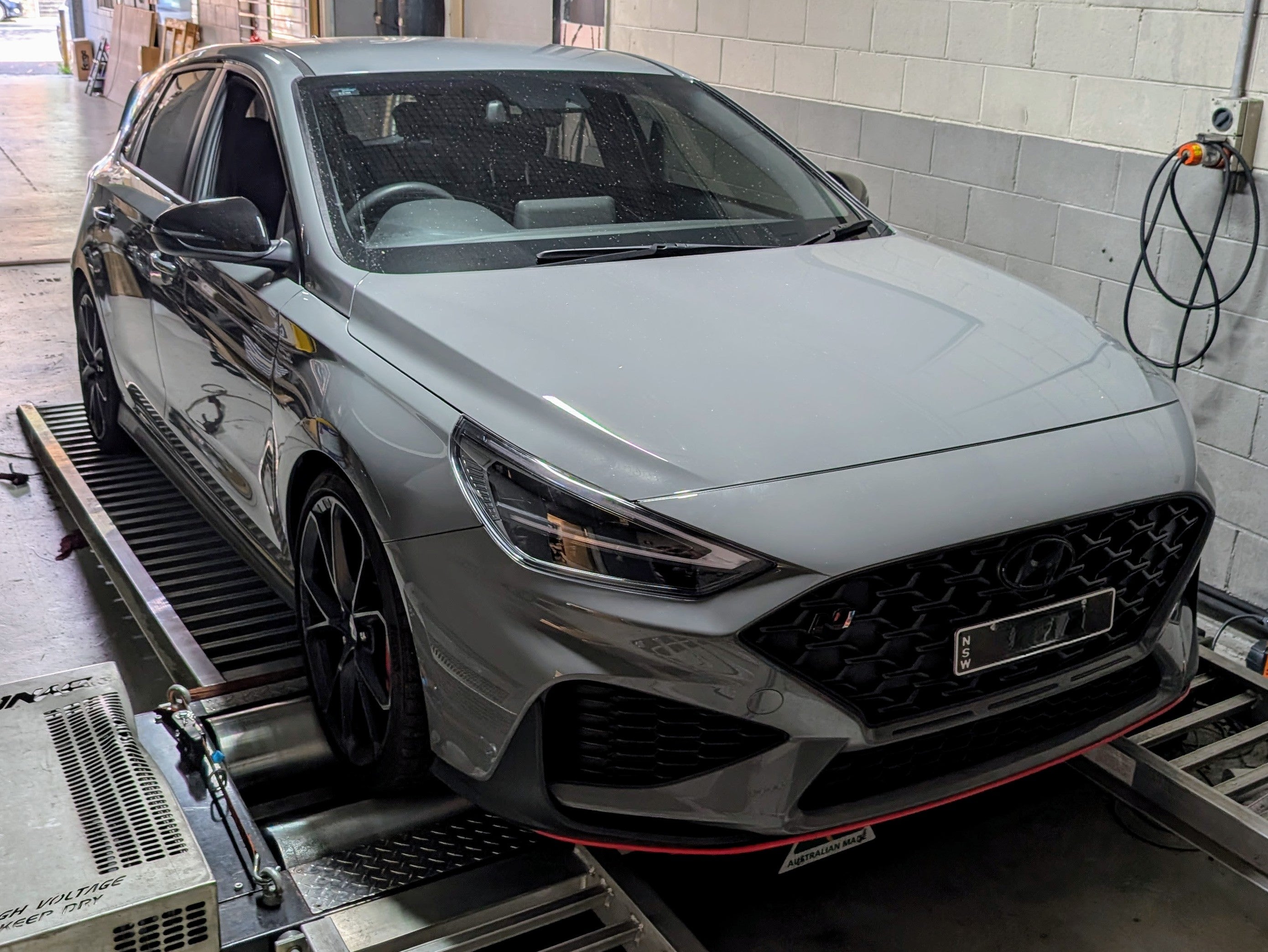
Reliability = Power
Standard tune
This is generally where we tune most cars, striving for a good balance of power gains and reliability. We will push the car to what we consider the "safe limit" for the modifications on the car.
Estimated Revisions: 1-4
Engagement Timeline: 3-4 weeks

Power > Reliability
Aggressive Tune
If you aren't worried about reliability or longevity of your car and just want to focus on making maximum power, this is the option for you. We will push the car harder than normal to make maximum power for your modifications. This doesn't mean that we're going to send you a tune file that we consider dangerous or specifically detrimental to your car, however chasing maximum power can potentially lead to shortened life on engine components. Obviously we're not looking to break anything, but if you want to take a risk, we'll push as hard as you want us to.
Estimated Revisions: 2-5
Engagement Timeline: 6-8 weeks
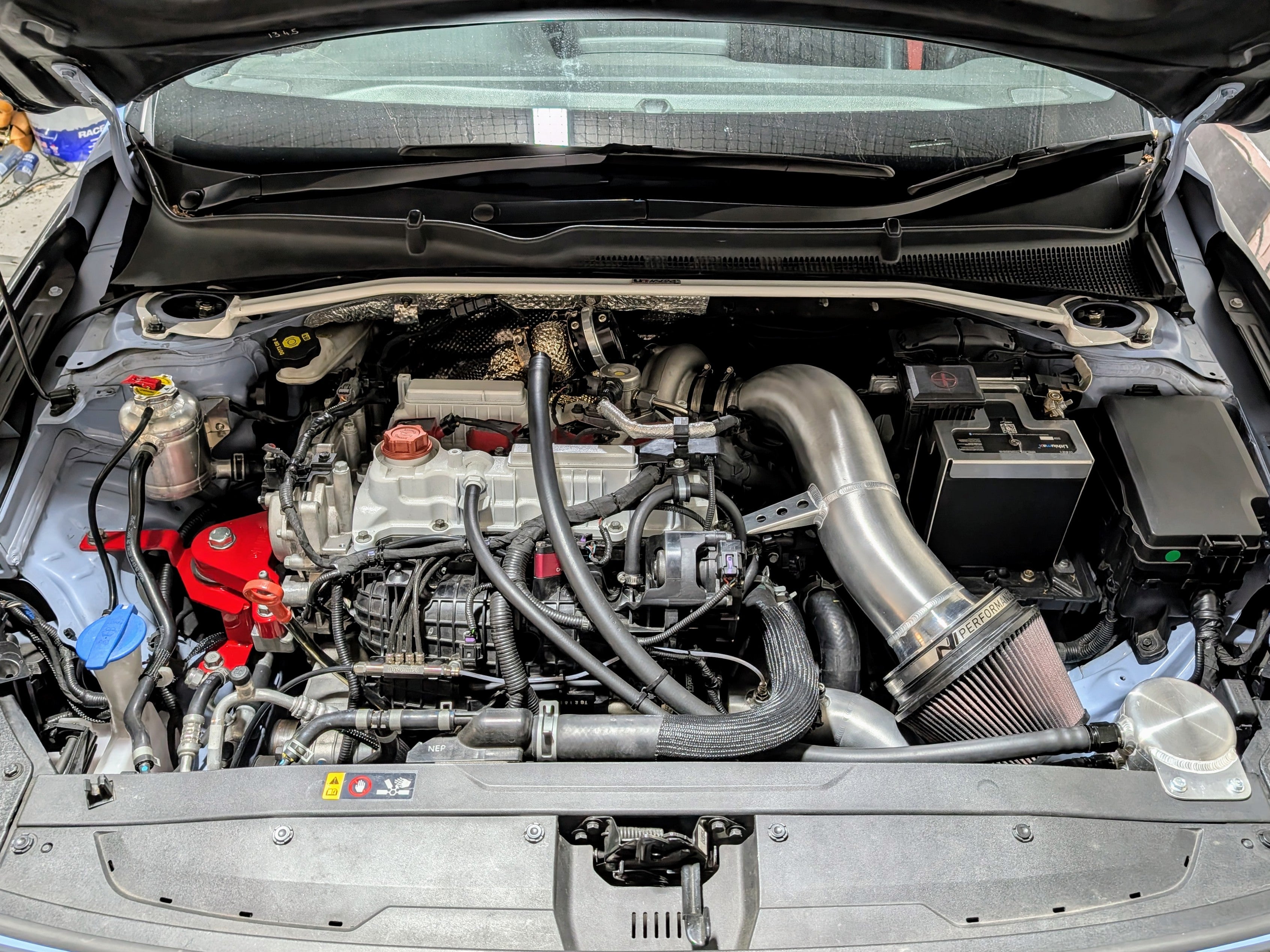
Pushing past the limit
Advanced or Complex Tune
You'll be required to purchase this option if you have anything from the list below and want us to tune the car specifically for it:
- Water/Methanol Injection
- Port Injection Manifold
- Upgraded, Hybrid, or Aftermarket Turbocharger (not including FL/EN turbo swap)
- Nitrous (NOS) setup
- E85 Tuning
Estimated Revisions: 5+
Engagement Timeline: 12 weeks+
Pop tune options
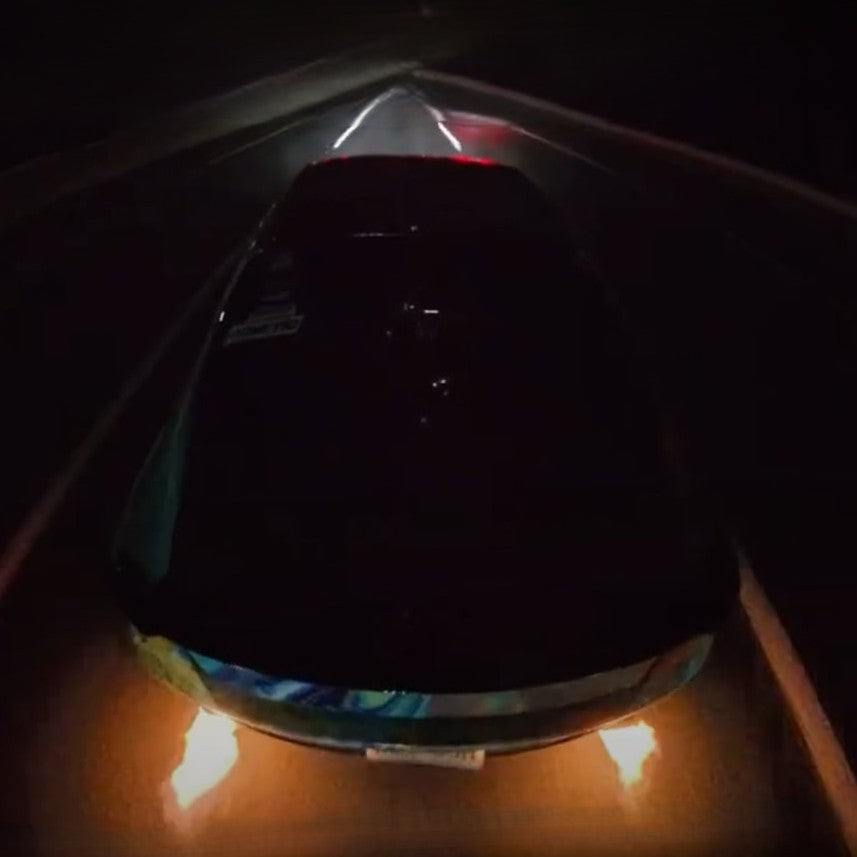
Kona N | i30N | Veloster N | Elantra N | i30 Sedan N
Pop Level / Aggression (2.0T)
Do you want your pop tune modified?
- No Pops - We will disable the pop function in your car
- No Changes - We won't touch the factory pop tune settings at all
- Burble Tune - We will disable the actual pops and instead tune in an aggressive deceleration burble
- Reduced Pops - Sometimes requested when adding a downpipe to keep pops closer to stock
- Standard Pop Tune- We clean up the factory pop tune, making them more consistent and slightly louder
- Aggressive Pop Tune - We turn the pop tune up to make them louder
- Crazy Pop Tune - If you're trying to piss off your neighbours and scare children (catless required)
Cerato | Veloster | Elantra | SR/N-Line | Other Models*
Pop Level / Aggression (Non-N)
Do you want to add pops and bangs to your tune?
- No Pops - We won't add any kind of pop, bang, or decel burble to your tune
- Burble Tune - The car will occasionally pop, but most of the time you'll just get a more aggressive deceleration sound.
- Standard pop tune (usually 3-4 pops when backing off the throttle) - second cat delete minimum
- Aggressive pop tune (pops will be louder and sharper) - downpipe required
- Crazy pop tune - your car must be catless (not for street use)
*Note: If you want to add any level of pops to a non-turbo model you will need extensive exhaust modifications. We recommend you speak to us about this when booking the tune.
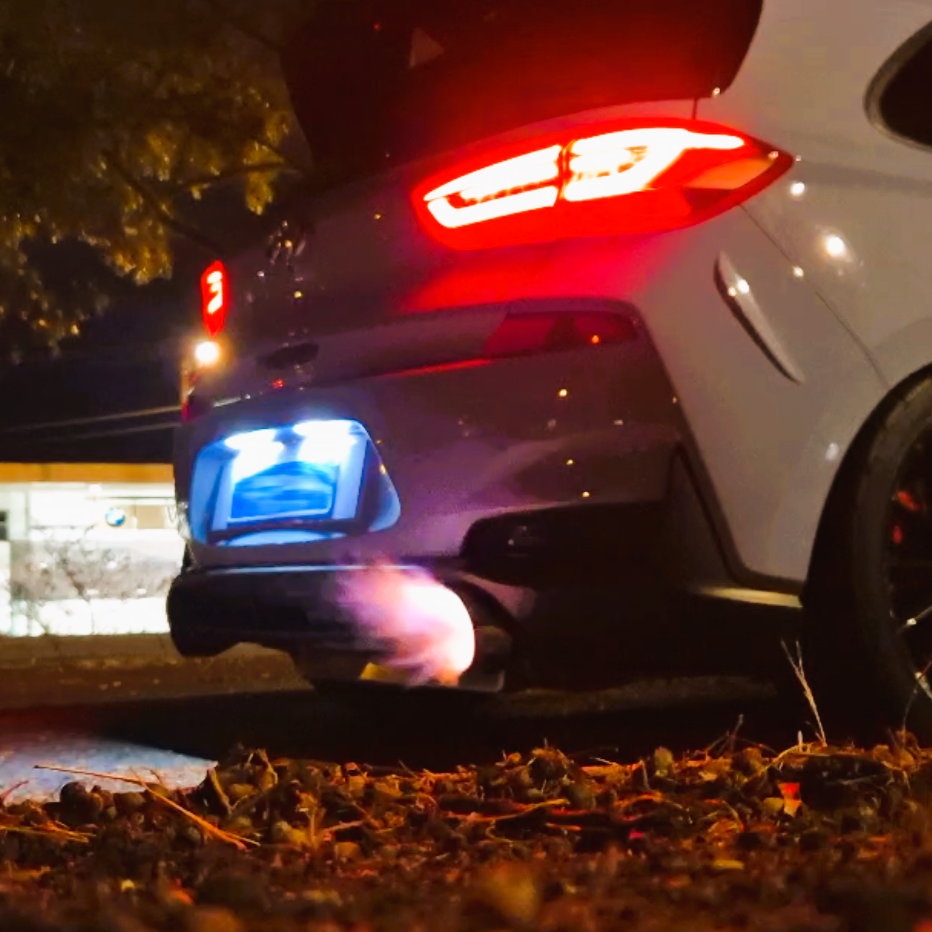
How long do you want your pops to be?
Pop Length
We can vary the length of the pop tune in your car, how long would you like your pops to be.
- Unmodified (from 0.4 seconds up to 0.8 seconds - depends on model)
- Short (~0.6 seconds)
- Standard (~0.8 seconds)
- Extended (~1 second)
- Very Extended (~1.5 seconds)
- Continuous (use with caution)
Note: We can tune continuous pops into the car, however there is a much higher chance of causing damage to the car by doing this. If you have a cat, you won't for long. Continuous pops will be in all modes, even for N-models
Tune Options List
Available for all models
We give you 3 options for raising the idle speed. A small increase, a larger increase, or a static idle speed regardless of mode. This will make the car always idle at ~ 950 RPM regardless of what engine mode you're in (eco, sport, Nmode, etc). An increased idle speed makes the car feel a lot smoother when idling and is great for anyone who has upgraded engine mounts installed, however there can be a small increase in fuel consumption if you spend a lot of time in traffic.
Available for 2.0T N-Models (i30N, VN, KN, EN, etc.)
We add more torque, boost, and RPM to the launch settings allowing for a harder and more aggressive launch that both sounds more aggressive and performs better than standard.
(Please See More Info Below)
(Manual transmission only)
We add more RPM and Torque to the clutch actuated "anti-stall" which makes taking off from a stop drastically easier. Infact, you can fully drive the car in traffic without needing to use the accelerator at all!
We will change the setup of your fan controller to keep the car running cooler. Generally, we target around 10*C lower for the fan to ramp up to full speed, to keep the engine closer to 90*C instead of around 100*C
Available for All N-Models (inc. i20N)
We will set the exhaust vale to be always open in N-Mode
We will set the valve to be closed in Normal/Eco at low RPM and idle (great for grumpy neighbours)
We reduce the torque request (and subsequently boost pressure) in 1st, 2nd, and 3rd gear. This helps a lot with getting the car off the line and generally improves acceleration by reducing wheel spin.
Getting the "Cherry Chop"
What are ghost cams?
Ghost cams are a change that we make to the Variable Valve timing (and a few other things) when the car is idling. This allows us to give the car a lumpy idle sound, similar to a car with an upgraded camshaft.
We can only set the Ghost Cams by RPM, they're not directly linked to engine mode, so when we say "Ghost Cams in N-Mode" really what we mean is that we're doing the cams at the specific idle range set by the car being in N-mode (as N-mode has an increased idle). This means there will be times while the car is warming up and has a raised idle that the cams will try to activate. This clears up when the car is warm.
Due to the changes that we make when doing the ghost cams, it's normal to experience a small amount of "rev-hang" when revving the car up from the idle RPM. This can take a little getting used to when taking off from a set of lights, however once you're moving you shouldn't notice any difference from stock.
Note: The cam will only properly lope when the car is fully warmed up, idling, and the A/C is turned off.
Note 2: You cannot select the "always increased" idle option and still have the ghost cam in only N-mode.
FAQ
Here is a short list of the most frequently asked questions regarding our tunes, if you have a question and it's not answered here, head over to our support page and submit your question over there.
Note: The majority of these questions and answers are in relation to the N platform and Theta (2.0T) cars.
The ECU in the 1.6T cars is much more limited, and most of these options are not available for Gamma (1.6T) owners.
CAN YOU DO...?
No, this is not a function of the factory computer, nor is it something that can be enabled just with standard tuning. We have heard of other tuners offering this option and as far as we can tell there is some kind of upshift/downshift trick involved to force the car into some kind of mode that seems to be somewhat similar to rolling anti-lag.
The truth is, it's definitely possible, and we know how it can be done, but implementation of something like this requires reverse engineering the ECU code and changing the operating system to actually set some kind of trigger (say, for example, holding down the cruise cancel button) to force the car to run special coding and custom maps to do true rolling anti-lag
Further to the point above regarding rolling anti-lag, while in theory this functionality is possible through custom ECU coding and custom map creation, it's not something that's available yet.
You would need to have some way to read the composition sensor to be able to get the ethanol content value, and this would require "hijacking" an alternative sensor on the ECU to be able to read this information.
It's definitely on our roadmap, and something we would really love to offer in the future, but it's an extremely time intensive research and development step which we have not been able to make time for as yet... Some day, hopefully!
Yes, we have done several cars that have stacked a JB4 for switchable boost control, logging, CPI, WMI, and others. We can definitely supply a fully functional back end tune with the ability to use a front end device to switch boost modes - however we do also (generally) recommend allowing the ECU to maintain full control of the engine at all times.
Not specifically, but as you can see from the images above, getting flames from the car is not uncommon when running our highest level of pop tune aggression. We don't promise flames, but we'd be surprised if you didn't get them running our "crazy pop tune" option.
Generally speaking our modified launch control tune is focused on actually giving you a more powerful/functional launch instead of focusing on making a lot of noise/flames. We can discuss options with you when you purchase your tune, but as a general rule this isn't how we approach tuning the launch control.
It depends what you're looking for...
Our ghost cam, coupled with our most aggressive pop tune, and a modified launch control tune is plenty of "show" for most people. But at the end of the day, this tune is custom, and if you want something specific as part of your tune just mention it to us. We'll work with you to deliver a tune that you're happy with.
HOW MUCH...?
While generally speaking we don't like to make estimates as to power levels, we have supplied a power guide for the Theta 2.0T platform further up this page.
The reason we're reluctant to suggest specific power numbers is that most cars perform differently on the dyno depending on a variety of factors. Here is a short list of things that can affect your measured power output on a dyno:
- Your tyres (type, age, wear, pressure)
- How the car is strapped
- How the dyno is run/operated
- If the car is being cooled properly
- The length of the dyno pull
- The weather (temp, humidity, etc)
- How well maintained your car is
- How the car was run in
- The quality of the fuel you're using
As you can see, it's very hard to suggest a specific power number from any given tune or level of modifications. What we will deliver you is a fast and reliable tune that you're happy with - and we have plenty of circuit, 1/4mi. and dragy times to back this up!
With most modern ECUs (including the ones used in modern Hyundai/Kia models) there isn't actually a specific "boost target" nor is there a specific ignition target either.
Ignition timing is inversely calculated against cylinder fill values, meaning essentially the more boost pressure (or more specifically, the more cylinder fill) you have, the lower the ignition timing is. This is how the factory ECU works, and our philosophy is to "allow" the ECU to make power instead of "forcing" the ECU to make power. Because of this, it's really not uncommon to see ignition timing numbers moving around quite a bit with one of our tunes, as we are making full use of all the calculation and correction factors in the ECU, to give the most linear torque curve possible, while being as safe as possible at all times.
In terms of boost numbers, the car will actually decide its own boost pressure targets based on the torque and airflow model. It will essentially attempt to target however much boost is needed (obviously within some limiting factors that we dictate in the tune) to maintain or achieve its torque target.
That said, there is a "lookup point" for the charge pressure, which is set to different values depending on the state of tune. But for the sake of an example, lets say that we're setting the pressure target table to 2.5 bar absolute (or 1.5 bar of boost at sea level - around 22psi). This becomes our "base value" however there's also an allowance in the tune to exceed this table if required to maintain the torque target, which is again something that we modify on a tune-by-tune basis, but generally this is an additional 0.25bar (3.7psi) which means, in theory, the ECU can target 25.7psi if it wanted to. This sounds like a high number, however the torque model isn't set up for cylinder fill values that are high enough to achieve this, unless you drive the car at high altitude.
We will review your charge pressure as part of the review process, and take into account what the ECU is doing with ignition timing (as this is one of the best indicators of how happy the car is making any given pressure level), then make any changes as needed.
Unless specifically pushing the car hard with one of our highest level of tunes - none.
Even if pushing hard, or over-riding the torque limitations imposed by the TCU on the ECU, our modelling process for ECU tuning ensures you're getting the absolute highest clamping force that your DCT can provide because we're reporting accurate torque values to your TCU.
We frequently have customers with DCT models commenting that the car feels like the gearbox was tuned, even just from our updated ECU coding. There's no tricks here, we're just allowing the ECU to calculate everything properly, and reporting true and accurate values between the ECU and TCU.
WHAT IS THE BEST...?
Whatever the highest grade of fuel you have access to is generally the fuel we recommend you run.
Contrary to popular opinion (especially amongst Australian owners) we actually recommend using E10 fuelling if 98RON is not available to you.
Without getting too "into the weeds" we recommend 98RON primarily, and E10 (94RON) secondarily. The single point of RON difference between 95RON "premium" and 94RON (E10) is more than made up for by the slightly larger fuel quantity that's used and the extra cooling that this offers. We have dyno tested this multiple times, and E10 always makes the same power as a 95RON tune on our dyno - and any additional additives in 95RON premium fuel don't generally come into effect as much when dealing with a direct injection engine.
If you're in the US, 93 Octane is ideal, but we've tuned plenty of customers on 91 where needed.
Ultimately, as we've mentioned several times, this is a custom tune. You will be asked what fuel you're planning on running, and your tune will be make to suit.
We have several staged tunes available on our website which help to break down our recommendations for what modification we consider to be the best value for any given price point.
DO YOU DISABLE...?
You'd better believe it... How insanely frustrating that Hyundai decided to add such an aggressive octane learning function to the CN7 N models.
We disable this by actually disabling the structure that controls the octane learning, if your car is being tuned for higher grade fuel, then there's no point leaving the learning model in place.
Generally speaking, yes. We do turn off the P0420 (catalyst inefficiency) code for cars running a downpipe, and we will fully disable the catalyst monitoring and cleaning processes for any cars running a high flow downpipe.
No, however we do make several changes to the sensitivity of the downstream sensors to ensure they're still giving accurate data for trimming fuel under cruise conditions and idle.
No - As several of our customers can attest, the overboost monitoring is alive and well in our tunes and sometimes we actually don't quite raise the limiter high enough for the new boost targets.
If you are tuned by us, and hit an overboost limiter, expect the car to go into "no-boost" limp mode, which can be fixed by restarting the car. If it's frequent and repeatable, get some logs of the tune and send them to us, and we will raise the overboost setpoint or lower the pressure targets by way of torque/airflow remodelling.
No, all our tunes have variable torque targets based on three separate mapped values; coolant temp, oil temp, intake air temp.
Additionally we make use of ignition management and trimming tables the modify ignition timing based on the above values along with variable changes due to different RPM setpoints.
Lead Times and Delivery Expectations
Setting expectations
Due to Cherry Tuning being a small business, and all tuning through the EK1 platform being completely custom and all managed by a single person, there can sometimes be substantial lead times associated with tuning remotely with the EK1.
While we will endeavour to get tune files out as quickly as possible and it's entirely possible that you'll get a first revision within a matter of days, realistically the tuning process from start to finish (including revisions) can take several weeks or even longer for a particularly complex tune - see our notes further up the page for more information.
